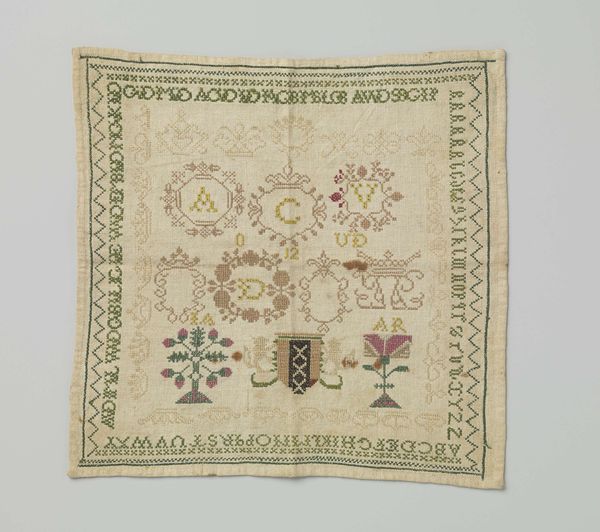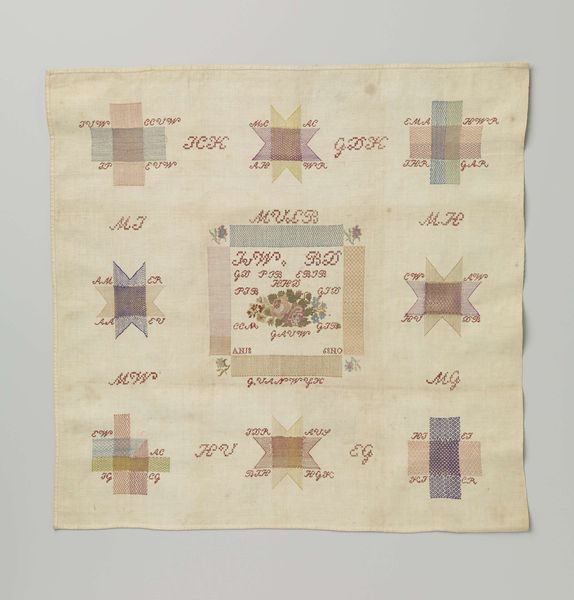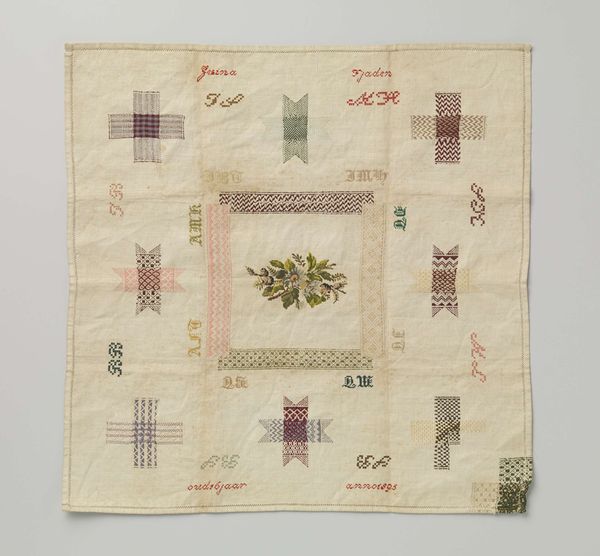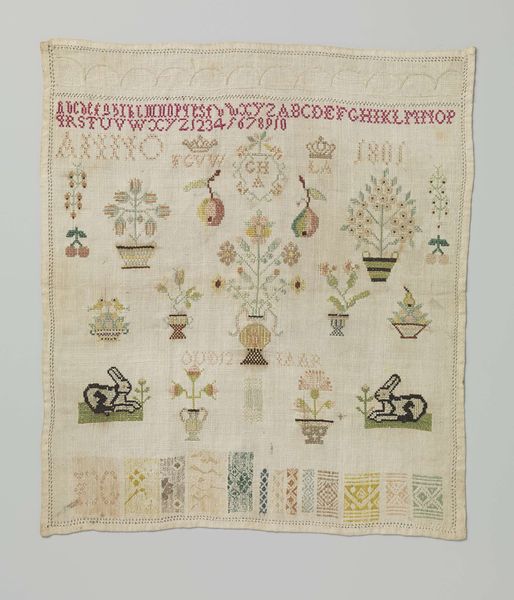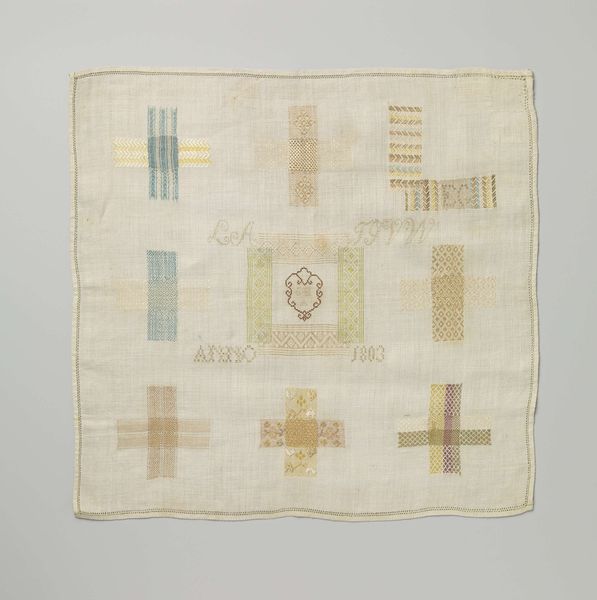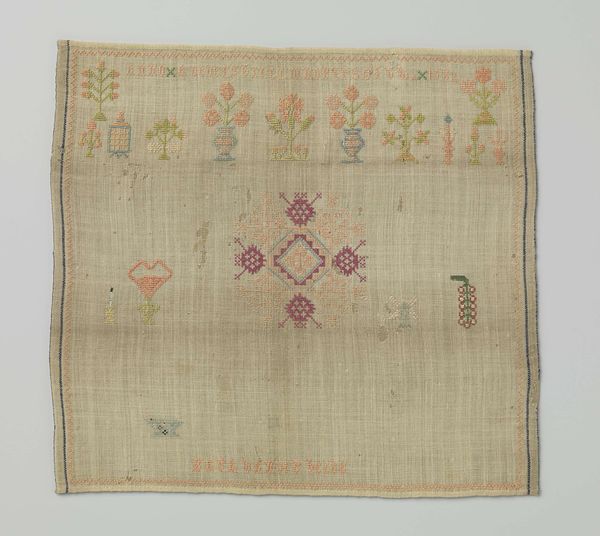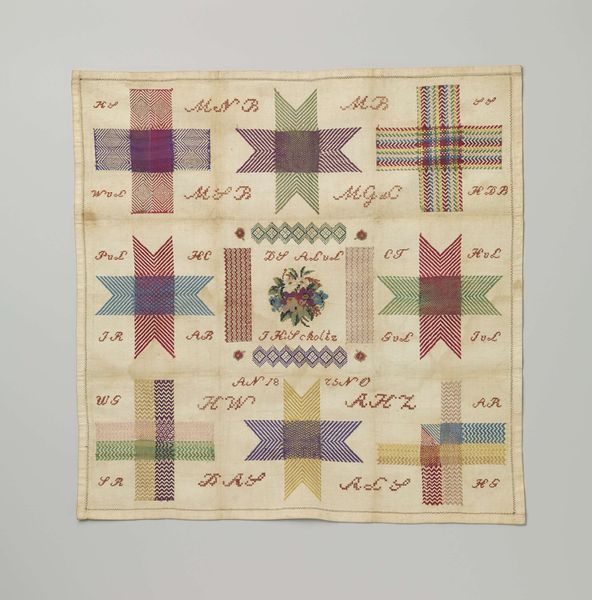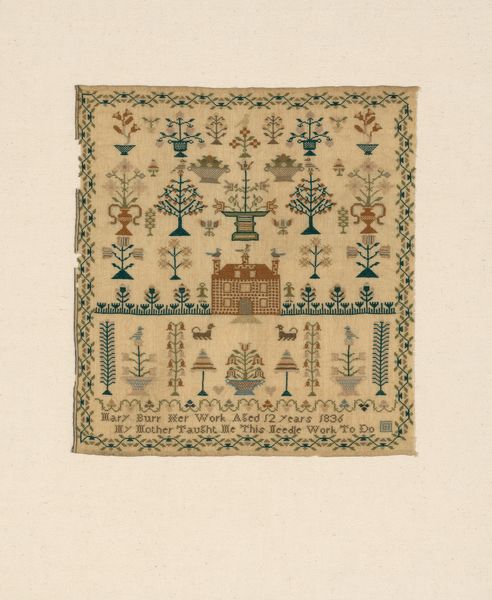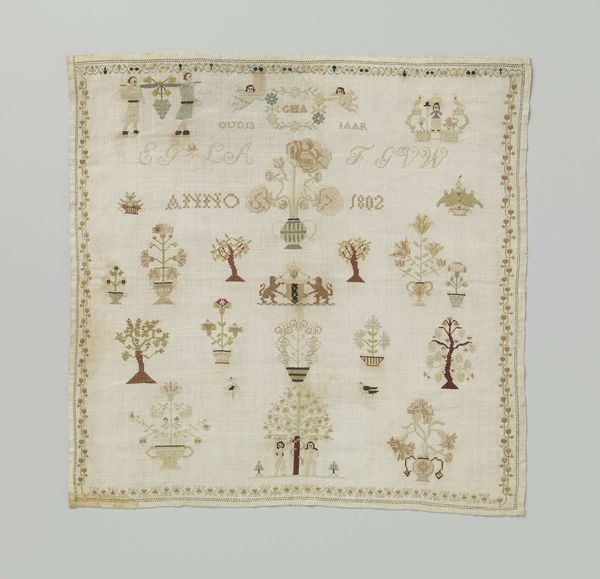
Merklap van wollen mousseline waarop met kruissteken van zijde een symmetrisch patroon met vogels, bloemen, dieren en ANNA VAN RYN ICK LEER NOCH, ICK BEN NOCH IONGH EN ONBEDOCHT MAER GODT HEEFT DIT IN MIN GEWROCHT. LOOFT.GODT.BOVEN. AL.IN.WARMONDT.1685. 1685
0:00
0:00
fibre-art, weaving, textile
#
fibre-art
#
medieval
#
water colours
#
narrative-art
#
weaving
#
textile
#
hand-embroidered
#
folk-art
#
genre-painting
#
imprinted textile
Dimensions: length 25.0 cm, width 34.5 cm
Copyright: Rijks Museum: Open Domain
Curator: Looking at this piece, the "Sampler with Wool Muslin and Cross-Stitch Embroidery" by Anna van Rijn from 1685, I’m immediately struck by its delicate, almost faded appearance. It gives off a sense of quietude, doesn't it? Editor: It does. There’s a sense of order to the sampler that's really captivating. The meticulous symmetry and placement of the cross-stitched motifs, like the birds and floral elements. I am curious about this gridded visual format with cross stitches that structure images and phrases as design. What's interesting from a historical perspective about this needlework that presents itself as artwork? Curator: Well, the sampler's origins are deeply intertwined with the socio-cultural education of women in the 17th century. These weren't simply decorative; they served as a record of stitches, patterns, and often, moral instruction. They signified a young woman's readiness for managing a household. You know, a kind of testament to a woman’s virtue, industry, and piety. Editor: Right. I am fascinated by how the anonymous textile presents an artistic form and statement about a given society and also individual expression within it. Considering its composition, each motif feels symbolic; the animals could represent fidelity and the floral elements, perhaps fertility. Curator: Absolutely! And consider the inscription—it’s an assertion of selfhood: "ANNA VAN RYN. I am neither silly nor untaught, God has made this work in me." It suggests a personal conviction within these otherwise codified social expectations. Note, it also thanks God and offers praise. Editor: It really transforms this from being just a record into something so much more meaningful. Do you find the materiality as something of a signifier here? Curator: That’s a great observation. Working with wool and silk was typical for these types of samplers but required skills only certain strata of society had, thus communicating status. Editor: So, in essence, this seemingly humble sampler contains an array of historical, personal, and visual cues that invite close inspection, Curator: Yes. The level of craftsmanship reveals an insight into not only artistic tradition, but also personal circumstance within 17th-century Warmondt society. Editor: Thinking about it, its quiet aesthetic draws in the viewer into an older time, prompting us to decode its historical, social and aesthetic composition. Curator: Indeed. This artwork bridges time, inviting conversation of the person, society and craftsmanship all at once.
Comments
No comments
Be the first to comment and join the conversation on the ultimate creative platform.
